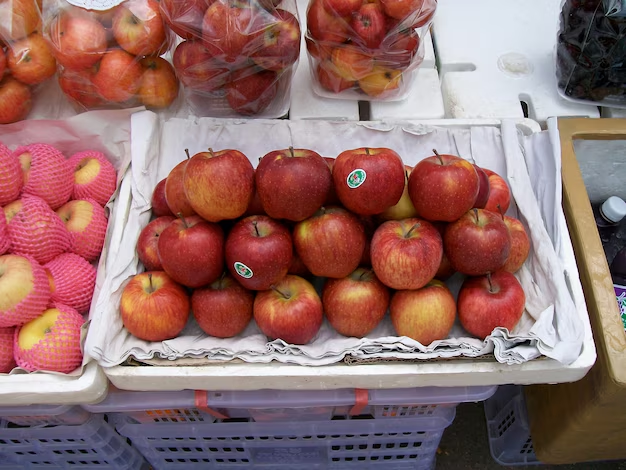Mastering Food Storage: Prolonging Shelf Life and Reducing Waste
As more people aim to minimize food waste and maximize freshness, understanding effective food storage techniques is increasingly vital. This guide will delve into practical and scientifically backed strategies for prolonging the shelf life of various food items, ensuring you make the most of your groceries while saving money and reducing environmental impact.
🌟 Why Food Storage Matters
Proper food storage is critical not just for minimizing waste, but also for maintaining nutritional quality and food safety. Spoiled food can harbor harmful bacteria and toxins, which are avoidable through correct storage methods. Moreover, the nutritional quality of food is largely retained when stored properly, allowing you to benefit from the full spectrum of vitamins and minerals.
Understanding Shelf Life
The Basics of Shelf Life
Shelf life refers to the period during which food remains safe, retains its desired sensory, chemical, physical, and biological properties, and complies with any label declarations. This timeframe can vary dramatically based on the type of food and the storage conditions.
Factors Affecting Shelf Life
Several factors influence the shelf life of food, including:
- Temperature: Cooler temperatures generally slow down bacterial growth and enzyme activity, extending shelf life.
- Humidity: Too much moisture can encourage the growth of mold and bacteria, while too little can cause a product to dry out.
- Light Exposure: Some foods are sensitive to light, causing them to degrade faster (e.g., oils and spices).
- Air Exposure: Oxygen can lead to the oxidation and spoilage of food products.
🤔 How to Store Common Foods
Fruits and Vegetables
Properly storing fruits and vegetables can significantly extend their freshness.
- Leafy Greens: Store in the crisper drawer of your refrigerator in a loosely tied plastic or mesh bag.
- Berries: Wash just before eating. Store unwashed in a breathable container in the fridge.
- Bananas: Keep at room temperature; they release ethylene gas, which can speed up ripening of nearby fruits.
- Potatoes and Onions: Store separately in a cool, dark, and dry place to prevent sprouting and spoilage.
Dairy Products
- Milk: Keep in the coldest part of the refrigerator, not in the door, which is slightly warmer.
- Cheese: Wrap in wax or parchment paper and store in an airtight container.
- Yogurt and Butter: Store in the fridge, sealed to prevent absorption of strong odors.
Proteins
- Raw Meat and Fish: Keep in a sealed container on the bottom shelf of the fridge to prevent drips contaminating other foods.
- Dried Beans and Legumes: Store in airtight containers in a cool, dry place.
- Eggs: Keep in their original carton and store in the fridge.
Packaged and Frozen Goods
- Canned Goods: Store in a cool, dry place with a stable temperature.
- Frozen Foods: Keep at 0°F (-18°C) or lower; label with dates so you know what to use first.
📦 Tips for Effective Food Storage
Freezing
Freezing can be a highly effective way to preserve food for long periods. Most foods can be frozen, but some, like those with high water content, may change in texture.
Freezing Tips:
- Blanch Vegetables: Before freezing, blanch vegetables to kill enzymes that might lead to spoilage.
- Use Proper Containers: Use airtight containers or freezer bags to prevent freezer burn.
- Align Cooldown Time: Cool hot food before freezing to prevent increasing the freezer temperature.
Vacuum Sealing
Vacuum sealing extends shelf life by removing air, the primary instigator of food spoilage due to oxidation. It’s particularly useful for:
- Meats: Can be sealed and stored in the fridge or freezer for longer life.
- Cheese: Helps prevent mold and drying out.
- Nuts: Stay fresh and crisp without exposure to air.
Fermenting
Fermentation is not only a preservation method but also enhances the nutritional profile of food. Examples include kimchi, sauerkraut, and yogurt, which are teeming with beneficial probiotics.
Recognizing Spoilage
Recognizing signs of spoilage is crucial to food safety:
- Sight: Changes in color or visible mold.
- Smell: Off or sour odors.
- Texture: Slimy coatings or unusual textures.
🍳 Quick Storage Tips at a Glance
Here are some practical tips to remember:
- 🥕 Fresh Produce: Store separately by type to prevent ripening gases from affecting other produce.
- 📅 Date Check: Regularly check expiry dates and rotate stock to use older items first.
- ❄️ Batch Cooking: Cook larger portions and freeze meals to enhance meal prep and reduce wastage.
- 💦 Humidity Control: Use crisper drawers for optimal humidity for fruits and vegetables.
Smart Storage for Anticipated Emergencies
In the face of natural disasters or emergencies, having a well-thought-out storage plan can prevent spoilage and ensure you have essentials on hand:
- Stock Rotatable Canned Goods: Foods such as beans, vegetables, and soups.
- Store Pantry Staples: Rice, pasta, and dried peas have long shelf lives.
- Keep Water: Alongside foods, maintaining a supply of clean drinking water is critical.
🛠️ Essential Tools for Food Storage
Investing in a few essential tools can significantly enhance food storage efficiency and effectiveness:
- Glass Jars: Ideal for preserving sauces, pickles, and bulk dry goods.
- Resealable Bags: Perfect for storing leftover foods and marinating meats.
- Silicone Lids: Reusable covers to keep food fresh in the fridge.
Conclusion: Sustainability and Food Storage
Adopting good food storage habits contributes not only to personal and financial well-being but also to environmental sustainability. By ensuring food is consumed and not wasted, resources devoted to producing, transporting, and selling food are effectively utilized. This thoughtful approach to food storage can make a substantial impact, allowing us to enjoy fresher meals while supporting a healthier planet.
By implementing the storage strategies mentioned in this guide, consumers can enhance their food’s longevity, leading to a reduction in waste and an increase in savings. Keeping items fresh and safe is a practical and impactful step toward more sustainable living, helping ensure that future generations can enjoy the same bounty of nature.
